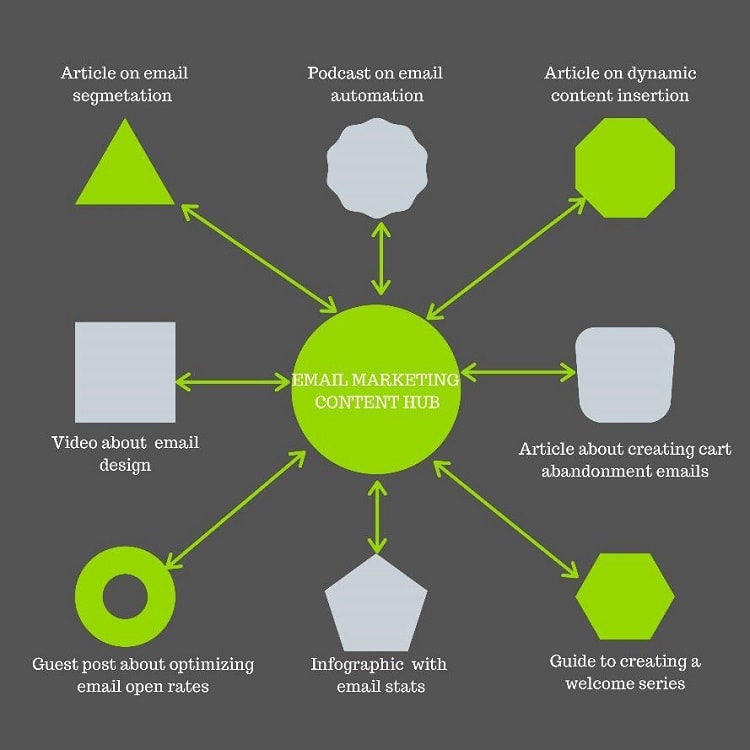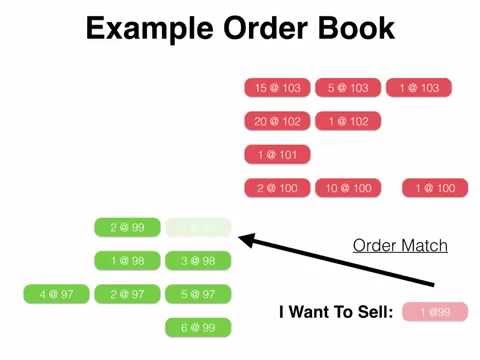
To calculate the Pearson correlation, start by determining each variable’s standard deviation as well as the covariance between them. The correlation coefficient is covariance divided by the product of the two variables’ standard deviations. Shows a hierarchical model in which the general factor is arrived at by first extracting group factors, which, if correlated with one another, allows a factor analysis of the group factors and the extraction of their common factor, g.
- Also, keep in mind that even weak correlations can be statistically significant, as you will learn shortly.
- We do this partly to put our subsequent treatment of local Gaussian correlation in perspective and partly to review other recent development within dependence modeling.
- This process is not hard, and each step is fairly routine, but the collection of all of these steps is quite involved.
- Those relationships can be analyzed using nonparametric methods, such as Spearman’s correlation coefficient, the Kendall rank correlation coefficient, or a polychoric correlation coefficient.
This test won’t detect (and therefore will be skewed by) outliers in the data and can’t properly detect curvilinear relationships. QuestionPro Research Suite is a suite of tools to leverage research and transform insights that can be used to collect data for Pearson correlation coefficient analysis. After exporting survey data from QuestionPro and importing it into a spreadsheet or statistical application, you can conduct the correlation analysis.
Partial correlation
Note also in the plot above that there are two individuals with apparent heights of 88 and 99 inches. A height of 88 inches (7 feet 3 inches) is plausible, but unlikely, and a height of 99 inches is certainly a coding error. Obvious coding errors should be excluded from the analysis, since they can have an inordinate effect on the results. It’s always a good idea to look at the raw data in order to identify any gross mistakes in coding. If you want to create a correlation matrix across a range of data sets, Excel has a Data Analysis plugin on the Data tab, under Analyze. Scatterplots, and other data visualizations, are useful tools throughout the whole statistical process, not just before we perform our hypothesis tests.
This process is not hard, and each step is fairly routine, but the collection of all of these steps is quite involved. The calculation of the standard deviation is tedious enough on its own. But the calculation of the correlation coefficient involves not only two standard deviations, but a multitude of other operations. The stronger the association between the two variables, the closer your answer will incline toward 1 or -1. Attaining values of 1 or -1 signify that all the data points are plotted on the straight line of ‘best fit.’ It means that the change in factors of any variable does not weaken the correlation with the other variable.
The closer the scatterplots lie next to the line, the stronger the relationship between the variables. The further they move from the line, the weaker the relationship gets. If the line is nearly parallel to the x-axis due to the scatterplots randomly placed on the graph, it’s safe to assume that there is no correlation between the two variables. Because the population correlation coefficient may be anywhere from about −0.28 to +0.60 (the confidence interval crosses zero), the orthopedist concludes that age has not been shown to be an influence. There exists another form of rank correlation coefficient, Kendall’s τ.
E(P), E(C), D(P) and D(C) are mathematical expectation of plain pixels P(i,j), mathematical expectation of cipher pixels C(i,j), variance of plain pixels P(i,j) and variance of cipher pixels C(i,j), respectively. The way correlation coefficient is interpreted has already been discussed. Figure 9.8.1 shows a few examples of regression fits to different datasets and the corresponding correlation coefficients.
The closer the correlation coefficient is to zero the weaker the correlation, until at zero no linear relationship exists at all. The correlation coefficient is a statistical measure of the strength of a linear relationship between two variables. A correlation coefficient of -1 describes a perfect negative, or inverse, correlation, with values in one series rising as those in the other decline, and vice versa.
Geometric interpretation
The implication for marketers is that now they have the adjusted correlation coefficient, as a more reliable measure of the important ‘key drivers’ of their marketing models. In turn, this allows the marketers to develop more effective targeted marketing strategies for their campaigns. The implication for marketers is that now they have the adjusted correlation coefficient as a more reliable measure of the important ‘key-drivers’ of their marketing models. The table below provides some guidelines for how to describe the strength of correlation coefficients, but these are just guidelines for description. Also, keep in mind that even weak correlations can be statistically significant, as you will learn shortly.
Let’s learn in detail about correlation and covariance in this article. Nor does the correlation coefficient show what proportion of the variation in the dependent variable is attributable to the independent variable. That’s shown by the coefficient of determination, also known as R-squared, which is simply the correlation coefficient squared. To perform the permutation test, repeat steps (1) and (2) a large number of times.
Mathematical properties
But when the outlier is removed, the correlation coefficient is near zero. We will begin by listing the steps to the calculation of the correlation coefficient. The data we are working with are paired data, each pair of which will be denoted by (xi,yi). One of the most common is wondering how well a straight line approximates the data. To help answer this, there is a descriptive statistic called the correlation coefficient.

The Pearson correlation coefficient can be determined by collecting data on two variables of interest through a survey. You can use this to learn whether the correlation between the two variables is positive or negative and how strong it is. The correlation coefficient formula finds out the relation between the variables. Use the below Pearson coefficient correlation calculator to measure the strength of two variables. Pearson correlation coefficient or Pearson’s correlation coefficient or Pearson’s r is defined in statistics as the measurement of the strength of the relationship between two variables and their association with each other.
The correlation coefficient: Its values range between +1/−1, or do they?
A 95% confidence interval for ρ can be defined as the interval spanning from the 2.5th to the 97.5th percentile of the resampled r values. Pearson’s correlation coefficient is the covariance of the two variables divided by the product of their standard deviations. The form of the definition involves a “product moment”, that is, the mean (the first moment about the origin) of the product of the mean-adjusted random variables; hence the modifier product-moment in the name. If the result is negative, there is a negative correlation relationship between the two variables.

The two summands above are the fraction of variance in Y that is explained by X (right) and that is unexplained by X (left). The inverse Fisher transformation brings the interval back to the correlation scale. Again, it is important to note that for practical correlation coefficient is denoted by applications we would want to use our calculator or statistical software to calculate r for us. When the value of one variable increases, the other variable decreases. When the value of one variable increases, the other variable also increases.
What is the correlation coefficient?
It is usual practice to quantify linear relationships through the Pearson correlation coefficient. To Indicate the strength and direction of the connection between two variables, it takes on a value between -1 and 1. To, find the correlation coefficient of the following variables Firstly a table is to be constructed as follows, to get the values required in the formula also add all the values in the columns to get the values used in the formula. A correlation coefficient is a statistical measure that contributes in deciding the degree to which changes in one variable predict changes in another.

This research plans to use three statistical correlation coefficients (Pearson, Spearman, Kendall) to calculate the correlation between load energy consumption and various influencing factors. The correlation coefficient can effectively measure whether the two changes have a similar change trend so as to analyze the relationship between them. The Pearson correlation coefficient measures the linear relationship between pairs of variables, which requires numerical codes for categories of each variable. A correlation coefficient assesses the degree of linear relationship between two variables. A correlation of \(+1\) means that there is a perfect, positive, linear relationship between the two variables.
Measuring Association and Agreement
In 1995, Erik Nord reported relatively poor test–retest findings for the PTO at the individual level, 40% measured by the percentage of agreement, but stressed that group-level reliability could, nevertheless, be satisfactory. In 1997, Christopher Murray and Arnab Acharya reported a lowest correlation coefficient of 0.87 among 9 different groups that performed the same PTO task. Of course, this statistic is only an approximation for the test–retest as not the same individuals were applied.
Improving the efficiency of 4A-zeolite synthesized from kaolin by … – Nature.com
Improving the efficiency of 4A-zeolite synthesized from kaolin by ….
Posted: Wed, 02 Aug 2023 12:37:45 GMT [source]
RXY ≈ 0, what was considered as dependent variable Y does not have any kind of linear correlation with what was considered as independent variable X. Instead of rXY, some authors denote the Pearson correlation coefficient as Pearson’s r. When applied to the total population (instead of a sample), Pearson correlation coefficient is denoted by the Greek letter ρ as ρXY. The slider bar at the bottom of the applet allows us to vary the value of the correlation coefficient (\(r\)) between -1 and 1 in order to observe the effect on a scatterplot. (If the plot does not change on your browser when you move the slider, click along the bar instead to update the plot).